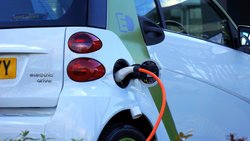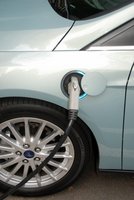A Fact-based Analysis

Few recent innovations are as potentially world-changing as the electric car. However, although hailed by most as an environment-saving invention, some others criticize them as a false hope. Fortunately, the electric car has also attracted a wealth of scientific research, and it’s in this research that we discover just how green it truly is.
Emissions
All major commodities produce manufacturing emissions as part of their creation, and it’s known that electric vehicle manufacturing emissions are higher than those of gasoline-powered cars. They can be anywhere from 15 to 68 percent higher and account for almost half of electric cars’ lifetime emissions. Most of these emissions are a result of manufacturing the large lithium-ion batteries that electric vehicles require.
At first glance, this seems to condemn the energy efficiency of electric vehicles, but a study conducted by the Union of Concerned Scientists (UCS) definitively proves this is not the case. The UCS study states that the manufacturing emissions of an electric vehicle are offset very early in its driving life: within about 4,900 miles for a midsize electric car and 19,000 miles for a full-size.
This means that within as little as a few months, the reduced emissions from an electric car completely offset those produced during manufacturing. Furthermore, even with their manufacturing emissions taken into account, electric vehicles produce dramatically fewer total lifetime emissions than gasoline-powered or even hybrid cars. This offers hope that electric cars are the answer to the problem of increasing carbon emissions.
Battery
Batteries are part of the problem, but can be a solutionA large part of the manufacturing emissions associated with producing electric vehicle batteries can be attributed to the environmental toll of mining lithium and other rare metals. And there’s also the question of waste; because these batteries lose their ability to retain a charge over time, manufacturers are tasked with the challenge of how to efficiently and affordably recycle them.
The answer to both problems is to get more electric cars on the road. Like with any recyclable waste, battery-recycling efficiency will improve when there are lots of batteries to recycle. And a lithium-ion battery’s life isn’t over just because it can’t charge an electric vehicle anymore. Scientists say used batteries contain about 75 percent of their original energy capacity. These batteries can thus be used to store energy in the production of renewable electricity, whether on the residential level or as part of a larger electrical grid.
Electricity
So far we’ve mainly discussed the environmental costs of manufacturing electric vehicles, but it’s also important to mention the emissions associated with driving and charging an electric car. Its energy efficiency, and thus how green an electric car is, ultimately depends on how the electricity used to charge it was generated. Unfortunately, some electric cars are charged by energy from coal-fired power plants, which are a source of heavy emissions.
As an example, consider an electric car charged in California versus one driven in the U.S. Midwest. The car in California would produce the emissions equivalent to a gasoline-powered vehicle

with 87 MPG, while the Midwest electric car would be rated around 35 MPG. This difference is based purely on how these regions generate electricity.
The UCS estimates that an electric car charged by natural gas-generated electricity will result in about half the pollution-related health problems of gasoline-powered cars. Powering up a vehicle from a renewable energy source drops that figure to about one quarter. They go on to state that, even with less efficient energy sources, overall emissions from an electric vehicle driven anywhere in the country are less than those of the average new gasoline-powered car.
All of this means that the efficiency of electric vehicles is intricately linked to the future of energy production. As the world continues to adopt renewable sources of electricity and retire increasing numbers of coal-fired plants, the already positive impact of the electric car can only improve. In fact, the UCS estimates that electric vehicle emissions could decrease by more than 25 percent with a transition to an 80 percent renewable energy grid.
Electric Cars are Part of the Solution
With all of the data available, it’s clear that electric cars are a tangible solution to the problems of global warming emissions, declining air quality and even noise pollution. And most scientists agree that drivers of electric cars should be rewarded; when you purchase an electric vehicle, you’re propelling the course of technology forward and making a positive impact on the environment. Electric cars are capable of delivering us not only to our destinations but also to a cleaner and more efficient future.
Related Stories You Might Enjoy:
Top 10 Low-Carbon Footprint Cars
How Long Do Hybrid Batteries Last?
The Best-Selling Electric Cars
